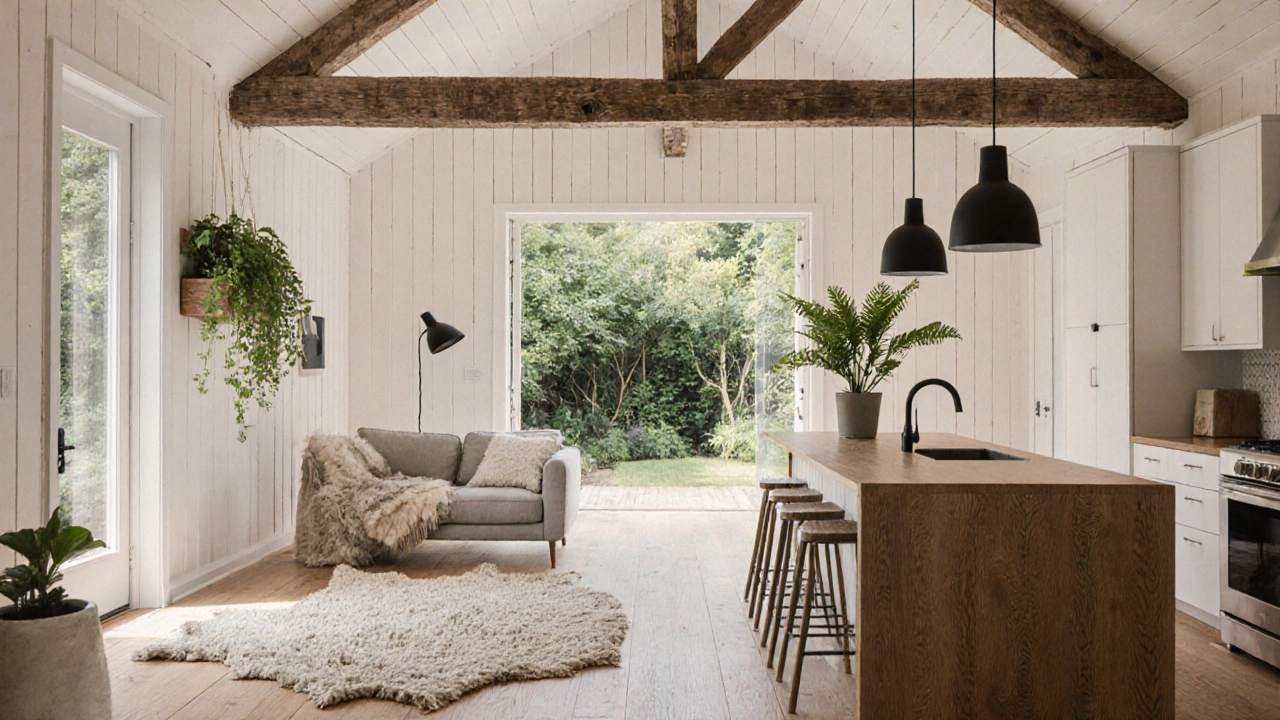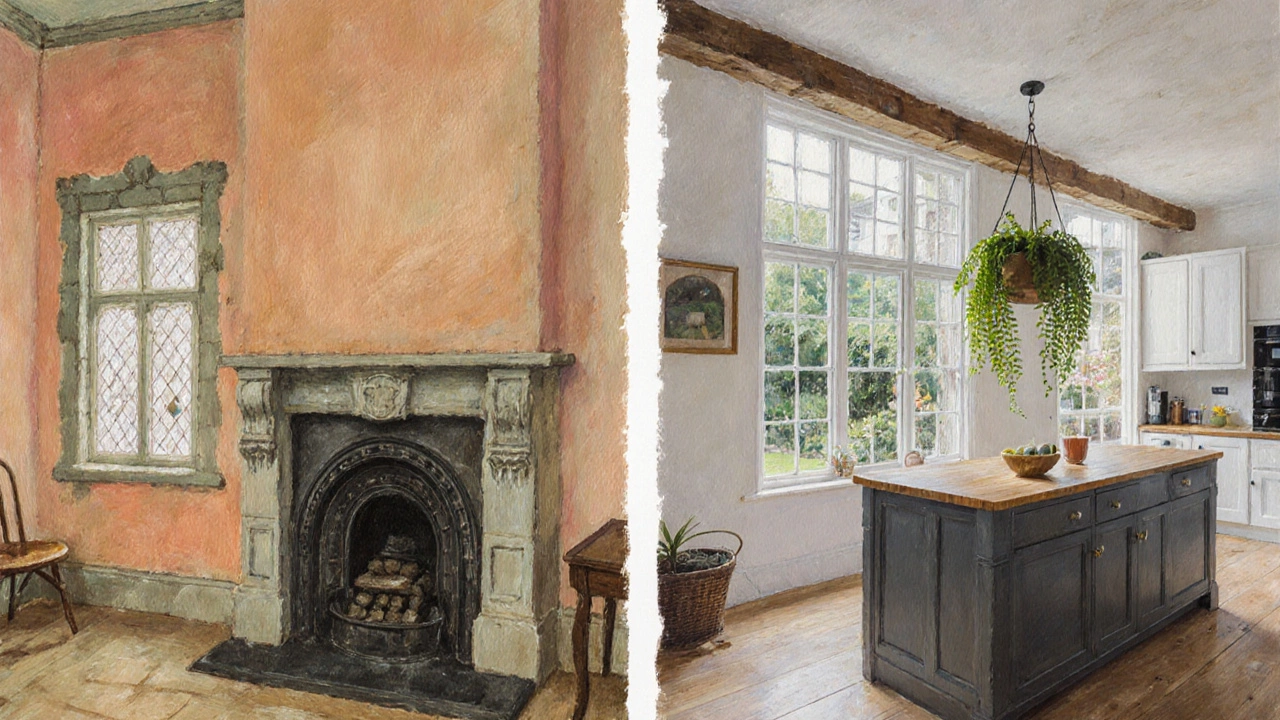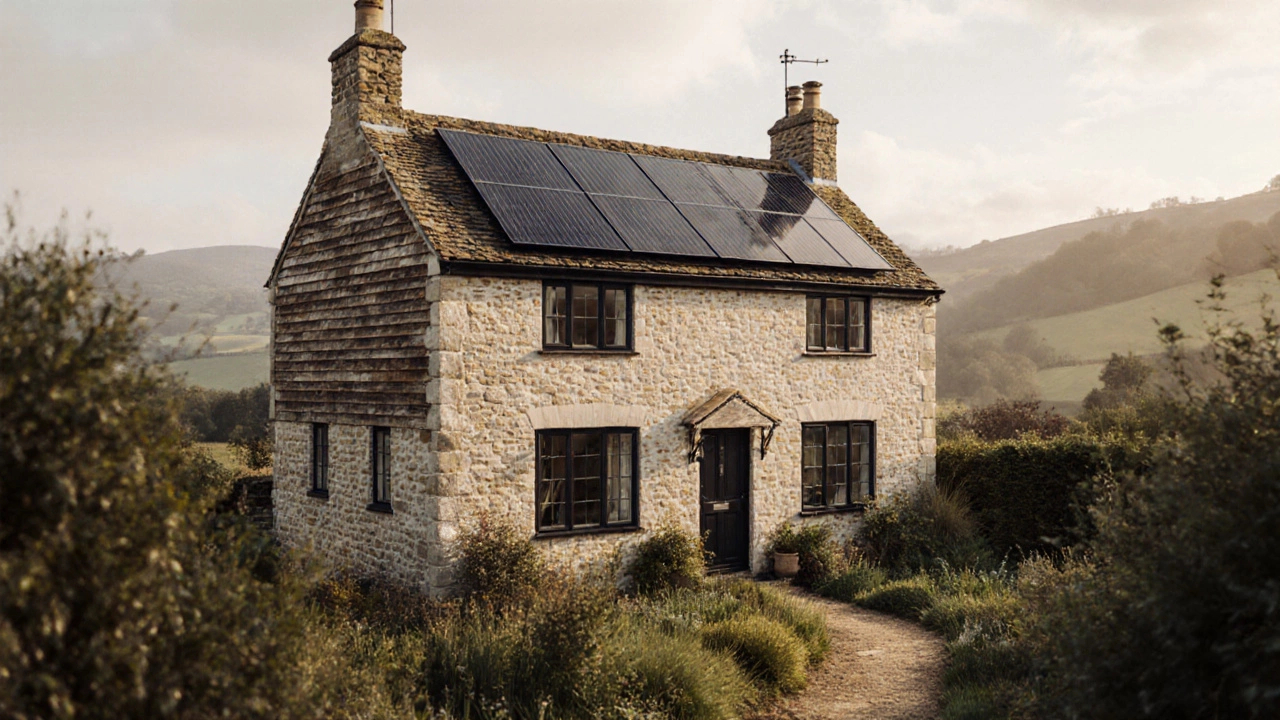Energy Savings Calculator
Calculate Your Heating Bill Savings
Estimate potential energy savings from implementing new cottage style features like double-glazed windows, proper insulation, and other sustainable upgrades.
Estimated Savings
Based on implementing energy-efficient upgrades described in the new cottage style movement.
The average new cottage style home achieves 25-35% energy savings, with potential savings of $250-$500+ annually.
When people talk about new cottage style is a contemporary take on traditional country cottages that blends rustic charm with modern sustainability and sleek design, they’re looking for a fresh vibe that still feels homey. If you’re chasing the new cottage style, here’s what you need to know.
What the New Cottage Style Actually Is
The new cottage style combines reclaimed natural materials, neutral colour palettes, and biophilic elements to create a space that feels both timeless and current. Think of a classic stone cottage, but with larger windows, open‑plan living, and eco‑friendly upgrades like solar panels.
Key Elements That Define the Trend
Four pillars hold up the whole look:
- Reclaimed wood offers weathered texture while reducing waste - exposed beams, floorboards, or shiplap walls.
- Neutral palette centers on soft whites, warm greys, and muted earth tones - creates a calm backdrop for natural accents.
- Biophilic design integrates plants, natural light, and organic shapes to boost wellbeing - indoor‑outdoor flow, skylights, and indoor gardens.
- Energy‑efficient upgrades include double‑glazed windows, low‑e glass, and insulated roofing - keep the cottage cozy without high bills.
How It Differs From Classic Cottage Aesthetics
Traditional cottages lean heavily on decorative trims, pastel colours, and compartmentalised rooms. The new cottage style swaps those for:
- Open floor plans that blur the line between kitchen, dining, and living spaces.
- Large picture windows that frame garden views instead of tiny mullioned panes.
- Minimalist hardware - matte black or brushed brass - over ornate brass knobs.
- Eco‑conscious finishes like low‑VOC paints and reclaimed stone.
While the essence of coziness stays, the visual clutter disappears.

Design Tips to Nail the New Cottage Look
Ready to bring the vibe home? Follow these steps:
- Start with the walls. Paint them in a warm off‑white (neutral palette) and add a single accent wall of reclaimed shiplap.
- Choose flooring wisely. Wide‑plank reclaimed oak works wonders; pair with natural wool rugs for softness.
- Swap out old lighting. Install pendant lights with matte black finishes and incorporate a few floor‑standing LED lamps that mimic daylight.
- Introduce greenery. Use hanging planters, a vertical herb garden, or a potted fiddle leaf fig to satisfy biophilic cravings.
- Upgrade windows. Opt for double‑glazed, low‑e frames - an energy‑efficient upgrade that cuts heat loss while letting in plenty of light.
- Feature artisanal details. Commission a local local artisan to craft a hand‑carved wooden dining table or iron chandelier.
Quick Checklist Before You Start
- Identify a neutral palette that matches the surrounding landscape.
- Source reclaimed wood or stone from reputable suppliers.
- Plan for an open‑plan layout; remove non‑structural walls where possible.
- Choose energy‑efficient windows and insulation.
- Schedule a site visit with a local artisan for custom pieces.
- Allocate budget for indoor plants and biophilic accessories.
Comparison: New Cottage Style vs Classic Cottage vs Modern Farmhouse
| Aspect | New Cottage Style | Classic Cottage | Modern Farmhouse |
|---|---|---|---|
| Floor Plan | Open, fluid spaces | Separate rooms, defined corridors | Open with occasional lofted areas |
| Materials | Reclaimed wood, sustainable stone | Original timber, painted plaster | Board‑formed siding, metal accents |
| Colour Scheme | Neutral whites, greys, earth tones | Pastels, muted floral prints | Black, white, navy with natural wood |
| Windows | Large, energy‑efficient panes | Small, divided‑lite sash windows | Oversized, often black‑framed |
| Eco Focus | High - reclaimed, low‑VOC, solar | Low - original materials, minimal upgrades | Medium - some energy‑saving fixtures |
| Decor Style | Minimalist, organic textures | Ornate, vintage accessories | Mix of rustic and industrial |

Real‑World Example: A Devonshire Cottage Makeover
Emma from Devonport recently renovated her 1900s stone cottage. She kept the stone façade but stripped the interior back to a neutral palette of warm white walls and a charcoal‑grey hearth. The kitchen now features a reclaimed oak island, a pair of large double‑glazed windows that overlook her garden, and LED lighting. She added a hanging fern garden in the living room, which instantly boosted the biophilic feel. The project cost roughly NZ$45,000, but Emma reports a 30% reduction in heating bills during winter.
Common Pitfalls and How to Avoid Them
- Over‑decorating. The new cottage style thrives on simplicity; keep accessories to a minimum.
- Choosing the wrong wood. Opt for properly treated reclaimed timber to avoid warping.
- Neglecting insulation. Large windows are beautiful, but without good insulation you’ll lose heat fast.
- Skipping professional advice. An architect can confirm that removing walls won’t compromise structural integrity.
Frequently Asked Questions
What colours work best for the new cottage style?
Muted whites, soft greys, and warm earth tones form the backbone of the look. You can add subtle colour accents like sage green or dusted blue through textiles or artwork.
Is reclaimed wood expensive?
Prices vary. Small reclaimed beams may cost a few hundred dollars, while large floorboards can run higher. However, the environmental savings often justify the cost, and many suppliers offer bulk discounts.
Do I need a planning permit for larger windows?
In most New Zealand regions, replacing existing windows with larger, energy‑efficient units does not require a consent, but it’s wise to check with your local council, especially if the cottage sits in a heritage zone.
Can I combine the new cottage style with a traditional garden?
Absolutely. Pair the modern interior with a cottage garden featuring lavender, rosemary, and native grasses. The contrast adds depth and keeps the overall feel cohesive.
What’s the best flooring choice for a new cottage style home?
Wide‑plank reclaimed oak or sustainably sourced bamboo works well. Both provide the rustic texture while fitting the neutral aesthetic.
